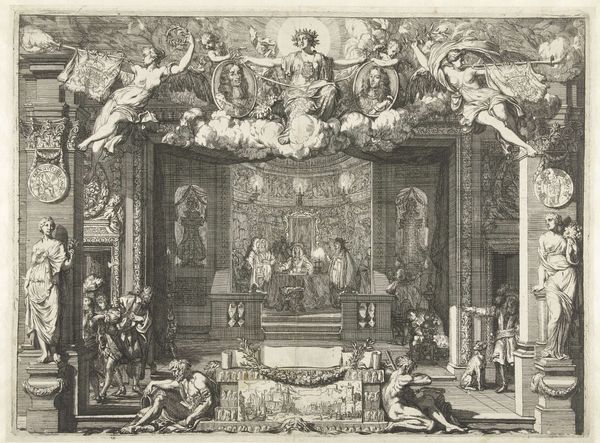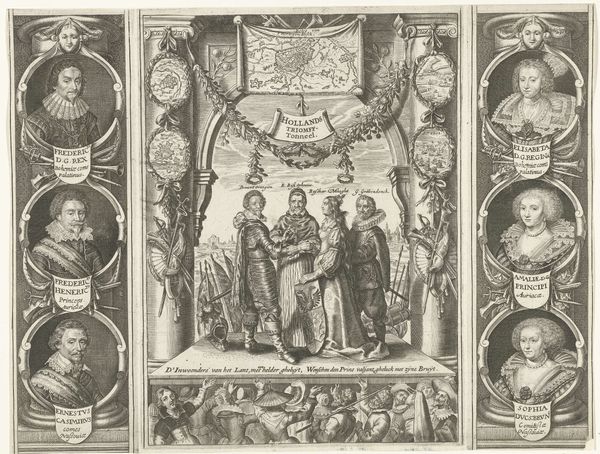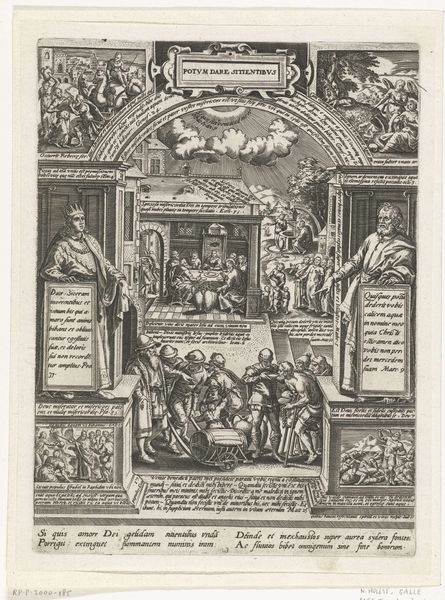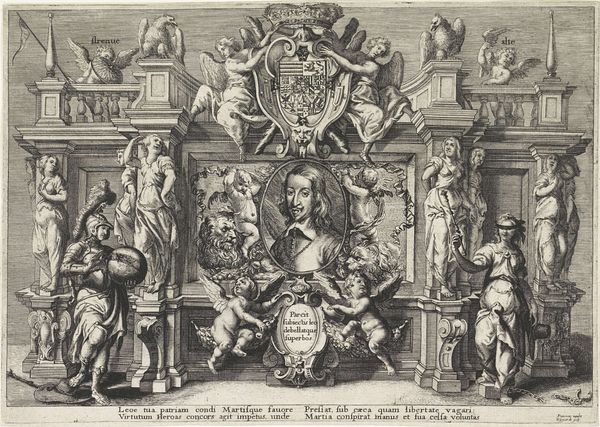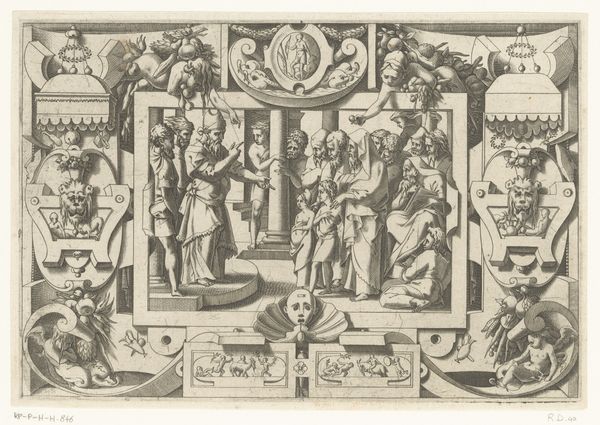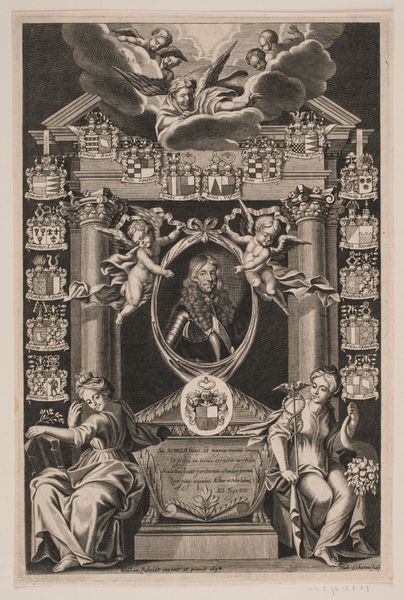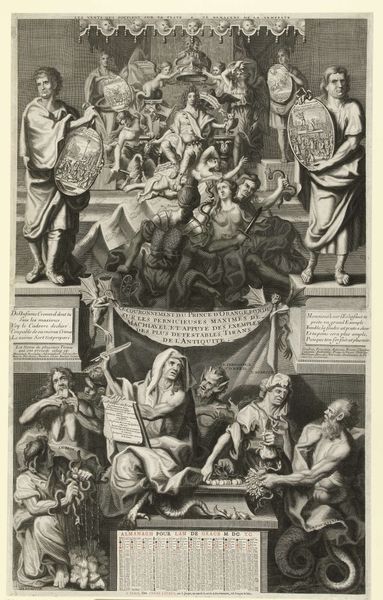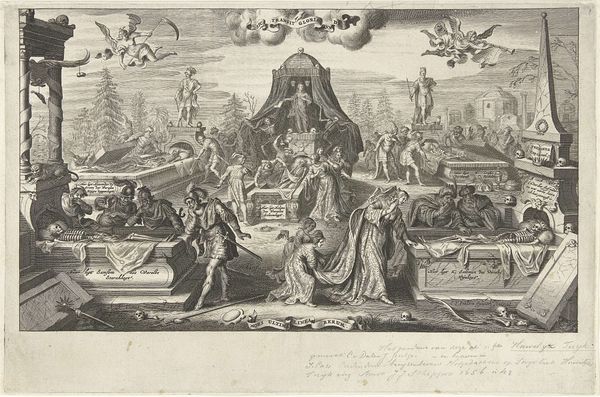
Huwelijk van Karel II van Spanje met Maria Anna van Beieren, 1690 1690
0:00
0:00
jacobusharrewijn
Rijksmuseum
etching, engraving
#
portrait
#
baroque
#
etching
#
history-painting
#
engraving
Dimensions: height 378 mm, width 506 mm
Copyright: Rijks Museum: Open Domain
Editor: This is "Marriage of Charles II of Spain to Maria Anna of Neuburg," an etching and engraving by Jacobus Harrewijn, dating to 1690. I am immediately struck by the formal rigidity, the almost staged quality of the event. What sort of message was this piece trying to communicate at the time? Curator: That staged quality, as you call it, speaks volumes about the sociopolitical landscape. Consider that royal marriages in the Baroque period weren't primarily about love, but about solidifying power, forging alliances. This piece likely aimed to broadcast a message of legitimacy, strength, and continuity for the Spanish crown. Who was Charles II? What do we know about the state of Spain during his reign? Editor: I recall learning he was the last Habsburg ruler of Spain, and his reign was plagued by challenges… economic decline, political instability… even questions about his ability to produce an heir, I believe. Curator: Precisely. So this image, laden with symbolic representations of power and ceremony, is working to counter that narrative of decline and instability. Look at the central portraits – isolated, elevated. Then the surrounding vignettes illustrating different stages of the marital journey and associated ceremonies. What do they convey, when seen together? How are the subjects portrayed in each frame, and how does that portrayal play with identity or cultural status? Editor: They create an image of grandeur, a seamless transition of power. Despite any real-world troubles, the etching suggests everything is unfolding perfectly. The almost journalistic-like documentation coupled with overtly symbolic portraits must have been intentional… Curator: Exactly. It highlights the ways in which power performs itself for public consumption. How different is the constructed image from the actual, more complex political and personal realities of the marriage, the country, and the future? Food for thought, isn’t it? Editor: It really is. I'll certainly view such historical artworks through a new, more critical lens going forward. Thank you for illuminating this piece beyond its surface representation. Curator: My pleasure! I find that contextual understanding enriches all art encounters, allowing us to unpack the multifaceted narratives embedded within them.
Comments
No comments
Be the first to comment and join the conversation on the ultimate creative platform.
